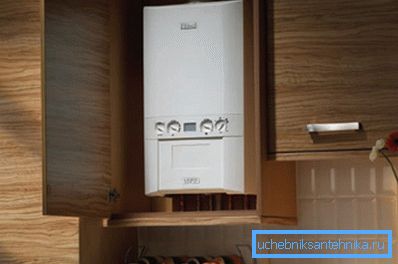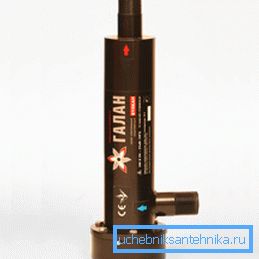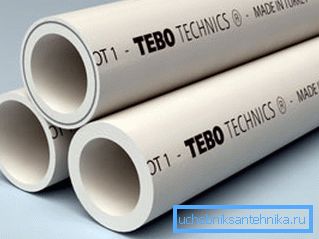Individual heating in the apartment: 3 steps to warmth,
Many residents of urban high-rise buildings are forced to put up with the cold in their homes in the winter, as the quality of heating services provided by public utilities often leaves much to be desired. Therefore, an increasing number of people are thinking about how to make individual heating in an apartment. Instructions describing the installation of high-quality climate network with your own hands, presented to your attention below.

Step 1. Legal settlement
Normative documents
The main regulatory act that regulates relations between consumers and suppliers of thermal energy is the Federal Law “On Heat Supply”, adopted on July 27, 2010. Taking into account the articles of this document, it is decided whether it is possible to make individual heating in the apartment.
Often, local state and municipal authorities interpret the norms of this legislative act incorrectly, and officials refuse to issue permits for the transfer of urban dwellings to an individual heating scheme. They motivate this by the fact that if most consumers are disconnected from general engineering networks, the total apartment heating with a centralized supply of heat carrier will suffer.

Without going into the technical side of this issue, it should be noted that according to the Government Decree №307 of April 14, 2014, if the heating equipment planned for use meets certain requirements, permission should be issued in any case.
The correctness of this statement is confirmed by judicial practice. There is a huge number of court decisions, according to which the transfer of an apartment to individual heating is recognized as complying with current legislation.
Note! The refusal of public utilities to issue permits is not just a whim. Often, an incorrect transfer to an autonomous heating system has a negative effect not only on utility networks, but also on the microclimate of neighboring apartments (for example, if you set the temperature too low, neighboring dwellings will lose heat through partitions).
Required documents
The question of whether it is possible to install a system of individual heating in the apartment, we decided. We now turn to the detailed coverage of the procedure for obtaining permission.
To do this, you must provide the following documentation:
- a written statement about your desire to transfer the apartment to an individual heating scheme;
- technical passport dwelling, compiled by the relevant authorities;
- documents confirming the ownership of the converted property;
- project diagram of individual heating in the apartment;
- written consent of all persons officially registered in the apartment.

Note! If you live in a house that is of historical or architectural value, then before you install an autonomous heating system, you need to get an opinion of the bodies involved in the protection of monuments and cultural heritage.
Step 2. Heater selection
The scheme of individual heating of the apartment, as, however, and a private house, provides for the presence of a heating unit. Therefore, before you conduct the pipes that supply the coolant to the radiators, you must select a boiler.
The modern market of climatic equipment offers a choice of a huge variety of models, which are classified according to several criteria:
- Purpose. The boilers can have one circuit, heating the liquid, or two. In the latter case, the second coil serves to heat the water, which will be used to meet domestic needs.

- Fuel used. Apartments with individual heating are most often equipped with a boiler that runs on electricity or gas. In the first case, you need to make sure that the existing wiring will withstand the necessary power, in the second - to obtain additional permission from the authorities that control the procedure for using gas equipment.
Note! There are also devices that can work on several types of energy carriers. If you purchase such a unit, then the individual heating system in the apartment will be more independent of the work of utility networks. However, the price of combined boilers is much higher.
- Heat exchanger material. If you look from the point of view of technical characteristics, it is better to buy a boiler made of cast iron. But this unit has a large weight and size, so it is more expedient to opt for steel models. They fully meet the needs of a standard apartment in thermal energy and economize on energy.

Let us dwell in more detail on the most popular models of climatic equipment.
Gas boilers
In the overwhelming majority of cases, gas aggregates are used to design individual heating systems. This is due to the fact that gas is one of the cheapest types of fuel.
Buy a boiler with a closed combustion chamber. It does not burn indoor air and does not require a vertical chimney for operation. It is enough to mount a horizontal two-chamber coaxial tube that goes through the wall to the street.
In addition, the gas boiler has other advantages:
- increased safety during operation;
- compact size, which allows it to be installed even in a small kitchen or pantry;
- small noise during operation (plus sounds from a running circulation pump);
- automatic support of specified modes, regardless of the gas pressure in the central gas pipeline;
- low cost.

Electric boilers
This equipment can be used as a backup heating circuit. As the main heating unit, it is suitable only if the main gas is not supplied in the dwelling.
The positive aspects of using an electric boiler are as follows:
- works absolutely silently;
- meets the most stringent requirements of sanitation and hygiene;
- has a very high efficiency;
- allows you to choose an individual temperature for each room in the apartment.
This equipment has many more advantages.
However, its wide distribution is hampered by two significant drawbacks:
- Consumption of large amounts of electricity, the price of which is higher than gas.
- Wiring in most apartments, especially old buildings, is not designed to connect equipment of such power, as a result of which it can be melted, short-circuited and even ignited.

Stage 3. Selection of additional elements
Pipelines
In addition to heating equipment, the installation of individual heating in the apartment provides for the presence of pipes that transport the hot coolant to the radiators and back.
The most commonly used parts of polypropylene, which has sufficient strength, has a low cost and is able to withstand water temperatures up to 95 degrees Celsius.
The number of pipes required depends on the selected pipe layout:
- monotube - in this case, hot water flows through all installed radiators in series, and then returns to the heater;
- two-pipe - as the name implies, two pipelines are mounted, one of which is necessary for supplying, the other one for removing coolant.

In the second case, of course, you will need twice as many pipes, however, both productivity and usability will be incomparably higher.
Note! Some types of boilers (in particular, solid fuel) heat water to 100 degrees Celsius. In this case, the wiring should be mounted only from steel pipes for heating, since the polymer can not withstand and melt.
Radiators
The optimal solution for installing a flat heating system - sectional radiators. The choice of material depends on your personal preferences. However, remember that the greater the thermal conductivity of the battery, the smaller the number of sections it should have.
For comparison, we give the power indicator for the most common radiators:
- cast iron - 1.1 kW;
- steel - 0.85 kW;
- aluminum - 1.7 kW;
- bimetallic - up to 2 kW.
On average, heating 10 m2 room with a ceiling of standard height requires 1 kW of energy.

Conclusion
Own heating system in the apartment is a very complex engineering network, so its installation must be carried out exclusively by professionals with relevant experience, knowledge and certificates that allow installing gas and powerful electrical equipment. For more information on how to do the work, you can find out from the video below.